Your exp is a bit backwards:
((\f x -> f$f$f$x) `exp` (\f x -> f$f$x)) (+1) 0 == 8
-- 3 ^ 2 = 8???
-- But 2^3 = 8
The correct(-er-ish) version would be
exp n m = m n
((\f x -> f$f$f$x) `exp` (\f x -> f$f$x)) (+1) 0 == 9
-- 3 ^ 2 = 9
because it maintains the familiar order. This doesn't really affect how you might go around defining exp.
Exponentation is repeated multiplication: nm is n multiplied by itself m times. Church numerals represent repeated application of a function to a value. So, churchMul n is a function that multiplies a numeral by n, m is function that repeats a function m times, and churchOne is the base value (identity of multiplication). Put them together, then simplify:
-- n^m is the repeated multiplication of 1 by n, m times
exp n m = m (churchMul n) churchOne
-- expand definitions x2; simplify churchOne
exp n m = m (\o f x -> n (o f) x) (\f x -> f x)
-- eta contract x2
exp n m = m (\o f -> n (o f)) (\f -> f)
-- definition of (.), id
exp n m = m (\o -> n . o) id
-- eta contract
exp n m = m (n .) id
-- eta expand
exp n m f = m (n .) id f
-- Assume m has the type forall b. (b -> b) -> b -> b
-- This assumption may actually be false here, because the implicit type of exp
-- does not require that m, n have that type. The difference is that you could define
-- bogus _ _ _ = 0
-- (which isn't a church numeral) and still pass it to exp, which would no longer
-- act like exponentiation:
-- exp n bogus = bogus (n .) id = const 0
-- which also isn't a church numeral
-- Polymorphic functions like m give rise to theorems that can be derived
-- entirely from their types. I used http://www-ps.iai.uni-bonn.de/cgi-bin/free-theorems-webui.cgi
-- to get this one automatically.
-- Free theorem of the type of m
forall a b (g :: a -> b) (p :: a -> a) (q :: b -> b).
(forall (x :: a). g (p x) = q (g x)) ->
(forall (y :: a). g (m p y) = m q (g y))
-- Instantiate g = ($ f), p = (n .), q = n, y = id
(forall x. (n . x) f = n (x f)) -> (m (n .) id f = m n f)
-- definition of (.)
(n . x) f = n (x f)
-- so...
m (n .) id f = m n f
-- transitive property
exp n m f = m n f
-- eta contract
exp n m = m n
The above stuff with the free theorem of m is really a rigorous version of the following argument (which probably translates better to the untyped lambda calculus):
-- m, being a valid numeral, is of the form
m f x = f $ f $ ... $ f $ f $ x
m (n .) id = (n .) $ (n .) $ ... $ (n .) $ (n .) $ id
= (n .) $ (n .) $ ... $ (n .) $ n . id
= (n .) $ (n .) $ ... $ (n .) $ n
= (n .) $ (n .) $ ... $ n . n
...
= n . n . ... . n . n
-- so
m n = n . n . ... . n . n = m (n .) id
As for why churchTwo churchTwo typechecks, note each occurrence in that expression has a different type, because churchTwo is polymorphic and describes an entire family of functions instead of just one.
-- most general type
churchTwo :: forall b. (b -> b) -> (b -> b)
-- Each occurrence of churchTwo can have a different type, so let's give them
-- different names.
-- I'm using underscores because these variables haven't been solved yet
churchTwo0 :: (_b0 -> _b0) -> (_b0 -> _b0)
churchTwo1 :: (_b1 -> _b1) -> (_b1 -> _b1)
churchTwo0 churchTwo1 :: _
-- Since churchTwo0 is being applied, the whole expression must have the
-- type on the right of the arrow
churchTwo0 churchTwo1 :: _b0 -> _b0
-- Since churchTwo0 is being applied to churchTwo1, the left side of the
-- top level arrow in churchTwo0 must be equal to the type of churchTwo1
(_b0 -> _b0) ~ ((_b1 -> _b1) -> (_b1 -> _b1))
-- Therefore...
(_b0 ~ (_b1 -> _b1))
churchTwo0 churchTwo1 :: (_b1 -> _b1) -> (_b1 -> _b1)
-- That's all the constraints we have, so replace the free variables
-- with universally quantified ones
chuchTwo0 churchTwo1 :: forall b. (b -> b) -> (b -> b)
-- (which is the type of a numeral)
